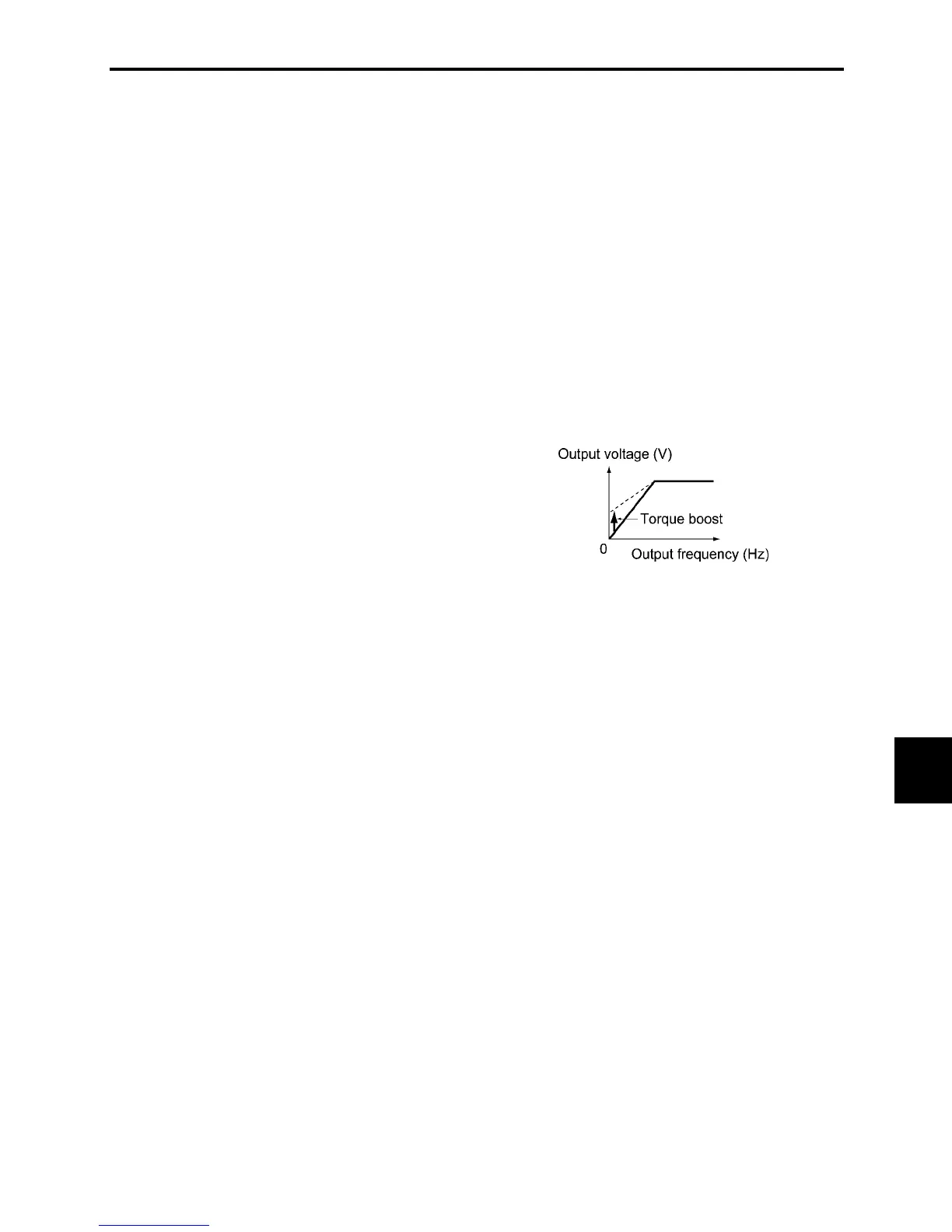Glossary
G-5
Glossary
Running mode
One of the three operation modes supported by the
inverter. If the inverter is turned ON, it automatically
enters this mode which you may: run/stop the motor,
set up the set frequency, monitor the running status,
and jog the motor.
S-curve acceleration/deceleration
(weak/strong)
To reduce the impact on the inverter driven machine
during acceleration/deceleration, the inverter
gradually accelerates/decelerates the motor at the
both ends of the acceleration/deceleration zones like
a figure of S letter.
Related function code: H07
Slip compensation control
A mode of control in which the output frequency of
an inverter plus an amount of slip compensation is
used as an actual output frequency to compensate for
motor slippage.
Related function code: P09
Stall
A behavior of a motor when it loses speed by
tripping of the inverter due to overcurrent detection
or other malfunctions of the inverter.
Start frequency
The minimum frequency at which an inverter starts
its output (not the frequency at which a motor starts
rotating).
Related function code: F23
Starting torque
Torque that a motor produces when it starts rotating
(or the drive torque with which the motor can run a
load).
Simultaneous keying
To simultaneously press the 2 keys on the keypad.
This presents the special function of inverters.
Stop frequency
The output frequency at which an inverter stops its
output.
Related function code: F25
Thermal time constant
The time needed to activate the electronic thermal
overload protection after the preset operation level
(current) continuously flows. This is an adjustable
function code data to meet the property of a motor
that is not manufactured by Fuji Electric.
Related function code: F12
Torque boost
If a general-purpose motor is run with an inverter,
voltage drops will have a pronounced effect in a
low-frequency region, reducing the motor output
torque. In a low-frequency range, therefore, to
increase the motor output torque, it is necessary to
augment the output voltage. This process of voltage
compensation is called torque boost.
Related function code: F09
Transistor output
A control signal that generates predefined data from
within an inverter via a transistor (open collector).
Trip
In response to an overvoltage, overcurrent, or any
other unusual condition, actuation of an inverter's
protective circuit to stop the inverter output.
V/f characteristic
A characteristic expression of the variations in
output voltage V (V), and relative to variations in
output frequency f (Hz). To achieve efficient motor
operation, an appropriate V/f (voltage/frequency)
characteristic helps a motor produce its output torque
matching the torque characteristics of a load.

